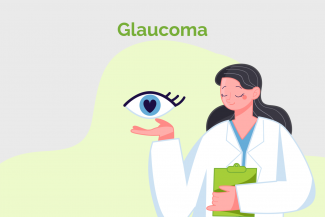
What are different types of glaucoma?
The clinical varieties of glaucoma are classified according to three parameters:
- Primary (idiopathic) or Secondary (associated with some other ocular or systemic conditions).
- The state of the anterior chamber angle: open angle (open access of the outflowing aqueous humor to trabecular meshwork) or closed angle (the trabecular meshwork is blocked by apposition of the peripheral iris).
- Chronicity: acute or chronic.
The vast majority of glaucomas are primary open angle and chronic. The rise in intraocular pressure associated with primary open angle glaucoma is due to a cellular dysfunction of the trabecular meshwork tissue, which leads to increased aqueous humor outflow resistance.
Closed angle glaucoma is a less common variety of glaucoma that can present acutely with severe eye pain, blurring of vision, colored halos around lights, nausea and vomiting. It is due to blockade of the trabecular meshwork by the peripheral iris, either by simple and reversible anatomical apposition, or pressing together, of the two tissues or by generally irreversible scarring and adhesion.










